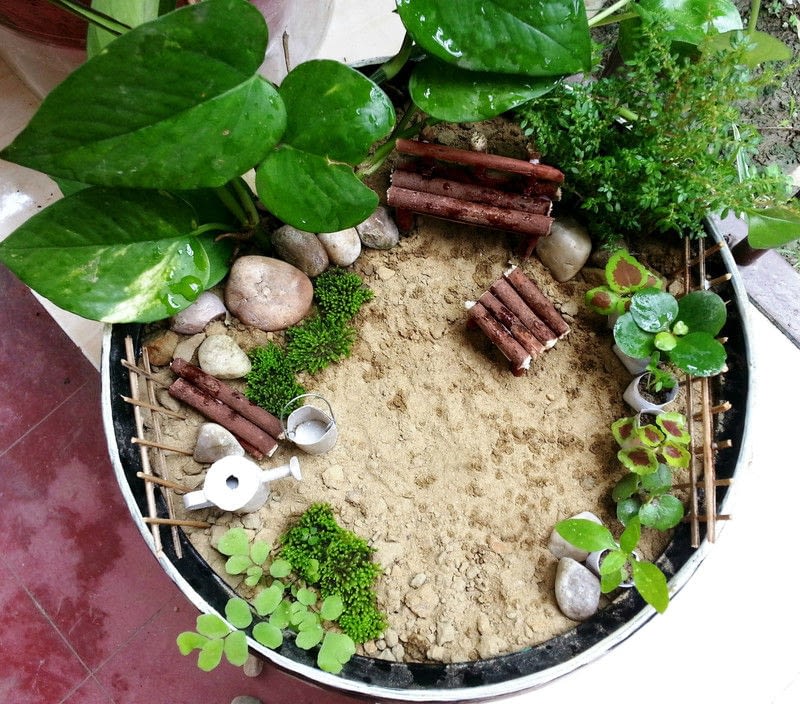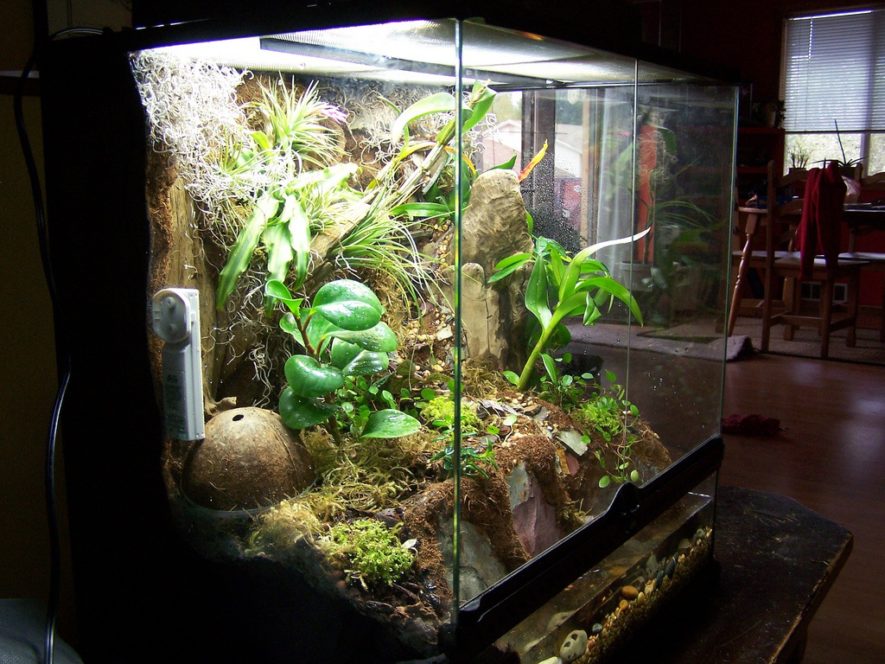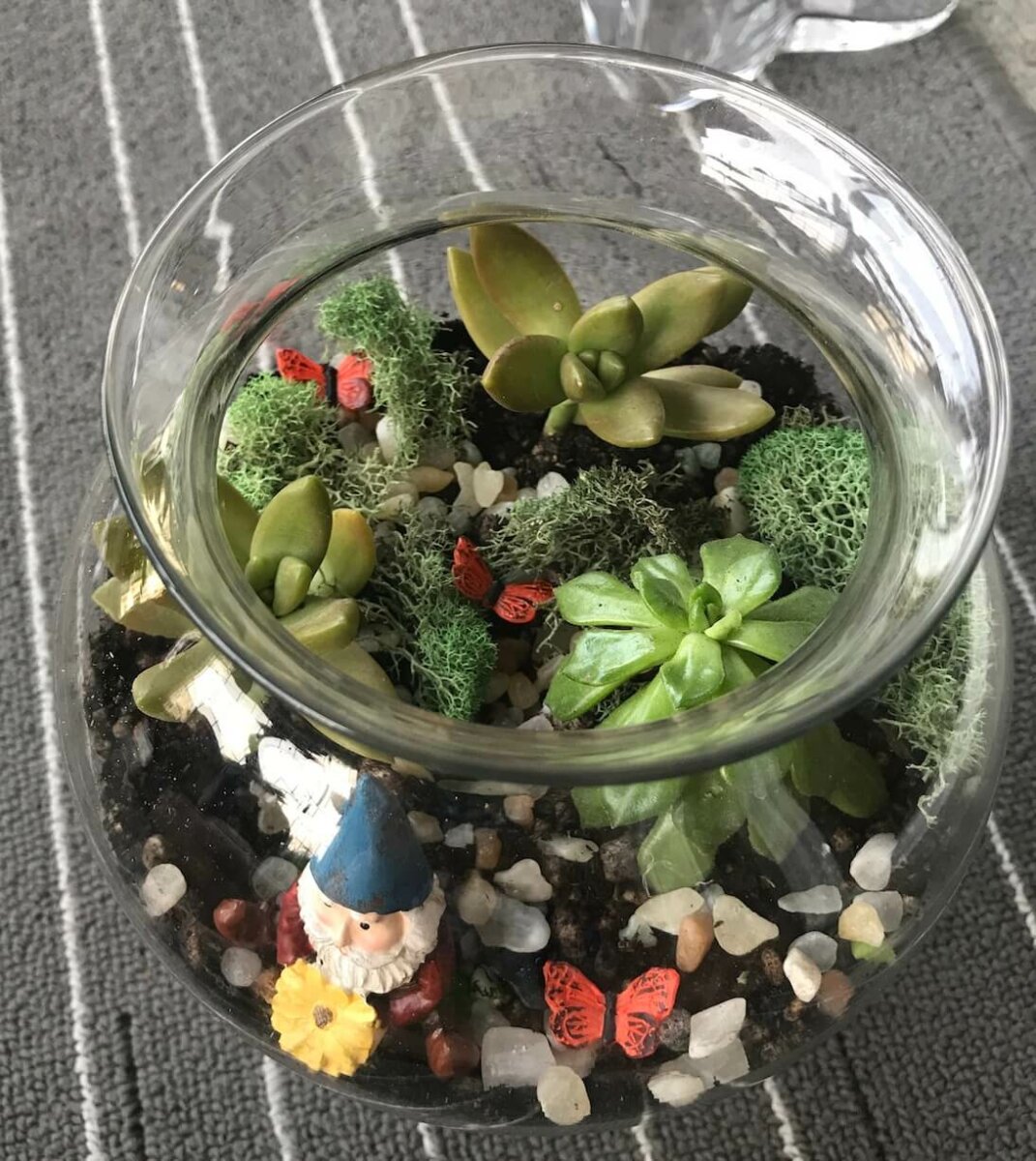The Art of Building a Self-Sustaining Ecosystem
Creating a thriving miniature garden in a glass container, also known as a terrarium, is a fascinating and rewarding experience. With the right materials and a little creativity, you can build a self-sustaining ecosystem that will bring joy and serenity to your home or office. In this article, we will explore the basics of setting up a terrarium and provide tips on how to create a beautiful and thriving miniature garden.
A terrarium is a closed environment that contains plants, soil, and decorative elements, all of which work together to create a self-sustaining ecosystem. The benefits of having a terrarium are numerous, including low maintenance, space-saving, and aesthetic appeal. With a terrarium, you can enjoy the beauty of nature without the hassle of constant watering and pruning.
One of the key principles of creating a self-sustaining ecosystem in a terrarium is to choose the right materials. This includes selecting a glass container that is suitable for the plants and decorative elements you plan to use. The container should be clean and dry, and have drainage holes to prevent waterlogged soil.
Another important consideration is the type of soil to use. A well-draining potting mix is essential to prevent water from accumulating in the soil and causing root rot. You should also choose plants that are well-suited for a terrarium environment, such as ferns, mosses, and air plants.
When setting up a terrarium, it’s essential to create a balanced ecosystem. This means choosing plants that will thrive in low-light conditions and selecting decorative elements that will complement the plants. By following these simple principles, you can create a beautiful and thriving miniature garden that will bring joy and serenity to your home or office.
Learning how to set up a terrarium is a fun and rewarding experience that can be enjoyed by people of all ages. With a little creativity and patience, you can create a self-sustaining ecosystem that will thrive for years to come. Whether you’re a seasoned gardener or a beginner, setting up a terrarium is a great way to enjoy the beauty of nature and relax in a peaceful environment.
Choosing the Right Materials for Your Miniature Garden
When it comes to setting up a terrarium, selecting the right materials is crucial for creating a thriving miniature garden. The right glass container, soil, plants, rocks, and decorative elements can make all the difference in creating a self-sustaining ecosystem that will thrive for years to come.
The first step in choosing the right materials is to select a glass container that is suitable for your terrarium. Consider the size and shape of the container, as well as the type of plants and decorative elements you plan to use. A clear glass container is ideal, as it will allow for maximum light penetration and visibility.
Next, choose a well-draining potting mix that is specifically designed for terrariums. This type of soil will help to prevent waterlogged soil and root rot, which can be detrimental to your plants. Avoid using regular potting soil, as it can retain too much water and cause problems in a closed environment.
When it comes to selecting plants for your terrarium, consider plants that are well-suited for low-light conditions and high humidity. Ferns, mosses, and air plants are all excellent choices, as they are adapted to thrive in these conditions. Avoid using plants that require direct sunlight or dry soil, as they may not do well in a terrarium environment.
In addition to plants, you’ll also want to choose decorative elements that will enhance the visual appeal of your terrarium. Rocks, shells, and small figurines can all be used to create a visually appealing display. Consider the color and texture of the decorative elements, as well as the overall aesthetic you want to achieve.
When learning how to set up a terrarium, it’s essential to choose materials that will work together to create a self-sustaining ecosystem. By selecting the right glass container, soil, plants, rocks, and decorative elements, you can create a thriving miniature garden that will bring joy and serenity to your home or office.
Remember, the key to creating a successful terrarium is to choose materials that will thrive in a closed environment. By following these tips and choosing the right materials, you can create a beautiful and thriving miniature garden that will last for years to come.
Preparing the Container and Soil for Planting
Once you have selected the right materials for your terrarium, it’s time to prepare the container and soil for planting. This step is crucial in creating a self-sustaining ecosystem that will thrive for years to come.
The first step in preparing the container is to clean it thoroughly with soap and water. This will remove any dirt or debris that may be present on the surface of the container. Rinse the container thoroughly and dry it with a soft cloth.
Next, sterilize the container by soaking it in a solution of 1 part bleach to 10 parts water for 10-15 minutes. This will kill any bacteria or fungi that may be present on the surface of the container. Rinse the container thoroughly and dry it with a soft cloth.
After the container is clean and sterilized, it’s time to add a layer of small rocks or pebbles for drainage. This will help to prevent waterlogged soil and root rot, which can be detrimental to your plants. Add a layer of rocks or pebbles that is about 1-2 inches deep, depending on the size of your container.
Once the rocks or pebbles are in place, it’s time to add the soil. Use a well-draining potting mix that is specifically designed for terrariums. This type of soil will help to prevent waterlogged soil and root rot, which can be detrimental to your plants. Add the soil to the container, leaving about 1-2 inches of space at the top for watering.
When learning how to set up a terrarium, it’s essential to prepare the container and soil properly. By following these steps, you can create a self-sustaining ecosystem that will thrive for years to come.
Remember to handle the soil and plants gently, as they can be delicate. Avoid compacting the soil, as this can prevent proper drainage and aeration. By following these tips, you can create a thriving miniature garden that will bring joy and serenity to your home or office.
Selecting the Perfect Plants for Your Terrarium
When it comes to selecting plants for your terrarium, it’s essential to choose plants that are well-suited for low-light conditions and high humidity. Ferns, mosses, and air plants are all excellent choices, as they are adapted to thrive in these conditions.
Ferns are a popular choice for terrariums, as they are easy to care for and can thrive in low-light conditions. They come in a variety of species, including the maidenhair fern, the rabbit’s foot fern, and the autumn fern. When selecting a fern for your terrarium, choose one that is compact and has a slow growth rate, as this will help to prevent the plant from outgrowing the container.
Mosses are another excellent choice for terrariums, as they are low-maintenance and can thrive in low-light conditions. They come in a variety of species, including sphagnum moss, peat moss, and sheet moss. When selecting a moss for your terrarium, choose one that is compact and has a slow growth rate, as this will help to prevent the plant from outgrowing the container.
Air plants are a unique and interesting choice for terrariums, as they do not require soil to grow. They absorb moisture and nutrients through their leaves, making them a great choice for low-maintenance terrariums. When selecting an air plant for your terrarium, choose one that is compact and has a slow growth rate, as this will help to prevent the plant from outgrowing the container.
When learning how to set up a terrarium, it’s essential to choose plants that are well-suited for the environment. By selecting plants that are adapted to thrive in low-light conditions and high humidity, you can create a thriving miniature garden that will bring joy and serenity to your home or office.
Remember to choose plants that are compatible with each other, as some plants may require different levels of light or humidity. By selecting the right plants for your terrarium, you can create a self-sustaining ecosystem that will thrive for years to come.
Adding Decorative Elements and Finishing Touches
Once you have selected the perfect plants for your terrarium, it’s time to add decorative elements and finishing touches to enhance the visual appeal of your miniature garden. This is where you can get creative and add personal touches to make your terrarium truly unique.
Rocks, shells, and small figurines are all great options for adding decorative elements to your terrarium. Choose items that complement the colors and textures of your plants and container. For example, if you have a glass container with a natural, earthy tone, consider adding rocks or shells in a similar color palette.
When adding decorative elements, consider the scale and proportion of the items in relation to the plants and container. You want to create a visually appealing display that is balanced and harmonious. Avoid over-accessorizing, as this can make the terrarium look cluttered and busy.
In addition to decorative elements, consider adding a layer of moss or small plants around the base of the plants to create a cohesive look. This will also help to fill in any gaps and create a more polished appearance.
When learning how to set up a terrarium, it’s essential to have fun and be creative with the process. Don’t be afraid to experiment and try out different combinations of plants and decorative elements until you find a look that works for you.
Remember, the key to creating a beautiful terrarium is to pay attention to detail and balance. By choosing the right plants, decorative elements, and container, you can create a miniature garden that is both visually appealing and self-sustaining.
With a little creativity and patience, you can create a thriving terrarium that will bring joy and serenity to your home or office. So don’t be afraid to get creative and have fun with the process!
Sealing and Maintaining Your Terrarium
Once you have added the plants, soil, and decorative elements to your terrarium, it’s time to seal the container to create a self-sustaining ecosystem. This is an important step in creating a thriving miniature garden, as it will help to maintain the humidity and temperature levels inside the container.
To seal the terrarium, simply place the lid on top of the container and ensure that it is securely closed. You can also add a small amount of water to the container to help maintain the humidity levels. However, be careful not to overwater, as this can lead to mold and mildew growth.
Maintaining your terrarium is relatively easy, as it is a self-sustaining ecosystem. However, there are a few things you can do to ensure that it continues to thrive. First, make sure to water the terrarium sparingly, as the plants will absorb moisture from the air and soil. You can also prune the plants to maintain their shape and promote healthy growth.
Monitoring the temperature and humidity levels inside the terrarium is also important. Most terrariums prefer temperatures between 65-75°F (18-24°C) and humidity levels between 40-60%. You can use a thermometer and hygrometer to monitor these levels and make adjustments as necessary.
When learning how to set up a terrarium, it’s essential to understand the importance of sealing and maintaining the container. By following these tips, you can create a thriving miniature garden that will bring joy and serenity to your home or office.
Remember, the key to maintaining a healthy terrarium is to provide the right conditions for the plants to thrive. By sealing the container and monitoring the temperature and humidity levels, you can create a self-sustaining ecosystem that will continue to flourish for years to come.
Troubleshooting Common Issues with Your Terrarium
Even with proper care and maintenance, terrariums can be prone to certain issues. Knowing how to identify and address these problems is crucial to keeping your miniature garden thriving. Here are some common issues that may arise and tips on how to troubleshoot and resolve them.
Mold and mildew are common problems in terrariums, especially in humid environments. To prevent mold and mildew, ensure good air circulation by not sealing the terrarium too tightly. If you notice mold or mildew, remove the affected plants or materials, and treat the area with a fungicide. Improve air circulation by gently tilting the terrarium or using a small fan to circulate the air.
Pest infestations can also occur in terrariums, particularly with spider mites, mealybugs, and scale. Inspect your plants regularly for signs of pests, and isolate infected plants to prevent the infestation from spreading. Treat the affected plants with insecticidal soap or neem oil, and repeat the treatment as necessary.
Overwatering is another common issue in terrariums, which can lead to root rot and other problems. Check the soil moisture by sticking your finger into the soil up to the first knuckle. If the soil feels dry, it’s time to water. Water your terrarium sparingly, as the closed environment can make it prone to waterlogging.
Underwatering can also be a problem, especially in dry environments. If the plants are droopy or wilted, it may be a sign that the terrarium needs more water. Water the terrarium gently but thoroughly, making sure not to overwater.
Temperature fluctuations can also affect the health of your terrarium. Most plants prefer daytime temperatures between 65-75°F (18-24°C) and nighttime temperatures 5-10°F (3-6°C) lower. Avoid placing your terrarium near heating or cooling vents, fireplaces, or drafty windows.
By being aware of these potential issues and taking steps to prevent them, you can enjoy a thriving and self-sustaining terrarium. Remember to monitor your terrarium regularly and take action promptly if you notice any problems. With proper care and attention, your miniature garden will continue to flourish and provide you with a beautiful and tranquil display.
Enjoying Your Thriving Miniature Garden
With proper care and maintenance, your terrarium will become a thriving miniature garden, providing a beautiful and tranquil display for years to come. To fully appreciate the beauty of your terrarium, take a step back and admire the intricate details of the plants, rocks, and decorative elements.
Observe how the light filters through the glass container, highlighting the textures and colors of the plants and decorative elements. Notice how the plants have adapted to the closed environment, growing and thriving in a self-sustaining ecosystem.
To enhance your enjoyment of the terrarium, consider placing it in a location where you can view it regularly, such as a windowsill or coffee table. This will allow you to appreciate the subtle changes that occur over time, as the plants grow and the environment evolves.
In addition to its aesthetic appeal, a terrarium can also provide a sense of calm and tranquility. The closed environment creates a miniature world, separate from the stresses and distractions of everyday life. By gazing into the terrarium, you can escape into a peaceful and serene environment, if only for a moment.
If you’re interested in learning more about how to set up a terrarium, consider experimenting with different types of plants, containers, and decorative elements. This will allow you to develop your skills and create unique and personalized miniature gardens.
Remember, the key to enjoying a thriving terrarium is to appreciate its beauty and tranquility. By taking the time to observe and care for your miniature garden, you can create a sense of connection and wonder that will last for years to come.
Whether you’re a seasoned gardener or a beginner, a terrarium is a great way to bring a touch of nature into your home. With its low maintenance requirements and space-saving design, a terrarium is the perfect solution for anyone looking to create a beautiful and thriving miniature garden.









